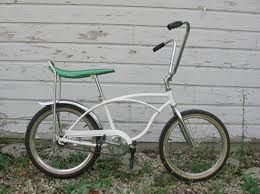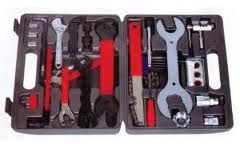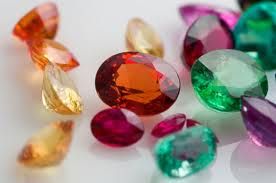
The Brain is a Castle
Addiction and the Adolescent
On occassion I will post some blogs about addiction, one of the main side effects of unmanaged stress, While addiction knows no boundaries of age, ethnicity, gender, or economics, many of my blogs will be about adolescent addiction, and the effect on their brains, and the brains of those around them.
The brain itself is a big place in a small space. And the adolescent brain in particular is one of the most remarkable.
I have amazing good fortune to be the Medical Director of a new program that treats kids ages 13 – 18 who are challenged by drugs and alcohol. One of our first patients was a 17 year old who had been in a different short term addiction rehab program and relapsed on Marijuana six days after discharge. He sat across from me, a tall, thin, lanky fellow, more distracted than discouraged or distressed. Most of the time his eyes wandered away, not impolite, but with a clear message that this meeting was not high on his pleasure list. He was tolerating me.
Given his relapse so soon after being in treatment, some would wonder about his sincerity and commitment to sobriety. His family was so disappointed they were contemplating sending him to a much longer term program, something like Job Corp, as they could not control him. The juvenile courts were involved, he was dropping out of school, and he had relapsed within a week.
But I was curious.
“Why six days?” I asked him. “Why not seven, or five? Why six?”
He slowly returned his gaze, with some growing recognition that this was a different kind of question. “I don’t know.” He succinctly replied.
“Any guesses?” (As an aside, adolescents and kids in general may very often answer “I don’t know” to questions. This may at first seem a real conversation killer but it has to be put in context. Kids are in school most of the time, and have been conditioned generally to right and wrong answers. Of course, our motivations to do things are much more complex, so a kid may truly not know. As such, I encourage them to wonder, to guess. Usually this opens the door to ongoing dialogue.) “Anything else happen on day six?”
Without hesitation he said with more animation in this one second than the ten previous minutes combined, “The bike I was working on got smashed.”
This kid loves to restore antique bikes. He would go to junk yards, pawn shops, and other places where he would buy broken, battered bikes cheap.

These he would take into his garage at home where he had built himself a shop. Vices to hold the bike, tools to delicately take out the bends and cervices with the dents and bumps of wear, paint brushes, metal polishers, brake wires, pads, handlebars, seats.

“So I was restoring this antique bike, a Schwinn 1963 Sting-Ray” (I did not tell him that I was born in 1958!) “I got it from this guy for ten bucks and it was really beaten up. Dr. Shrand, this is a classic bike. When I got it fixed I could have sold it for plenty of money. I saw handle bars on ebay for 12 bucks just for the handle bars!”
“So I’m fixing this bike. I love doing this stuff. So I’ve just finished painting it. I got it right after I got out of rehab. It was my treat, you know, so I wouldn’t smoke weed. I mean, I love doing these bikes. You start off with a piece of junk and you make it into something anyone would want.

And I’m moving it real careful ‘cause I don’t want to scratch it or mess up the paint and somehow I bumped into this huge crowbar and it just smashed right down on it and it was crushed. It smashed right through the spokes, and bent up the frame.
“There was no way I could fix it. So I got so bummed. I just smoked.”
“Ah. A blunt just materialized out of the air, right there in front of you , like poof hey what’s this? A blunt!”
“Nah, I had to call my buddy and get some money and we went and bought some weed.”
“And that took how long?”
“I don’t know. An hour?”
“So if the bike hadn’t been smashed?”
“I’d be sober. I love doing bikes.”
“And if you could choose between the pleasure of restoring bikes and getting stoned. You could only have one?”
“Bikes! I could do it forever.” Without hesitation. This guy got more pleasure from restoring antique (Antique!) bikes than from getting high. The human brain wants to feel pleasure. This is critical to understand addictions, and also how to treat them.
But there are many kinds of pleasure. There is the internal pleasure of drugs and alcohol which we explore in future blogs. But there is also the pleasure of relationships, of attachments, of feeling valuable to someone else. And the pleasure of doing something you love.
For this kid, perhaps it was the neuro-economic pleasure of money, but more likely the accolades from others of a job well-done, and personal pride and accomplishment of taking junk and making it into something “anyone would want.” This kid saw beauty hidden beneath the rust and dirt of a discard. With a little effort and care the splendor was restored and he felt proud. It was this pleasure that he would choose over doing drugs. This is a critical insight into the human brain, and we will be coming back to this often as we spend time together, writers and readers, connecting through this blog.
These are amazing kids, and it is our mission to help us all remember that. People with addiction are too often seen as the rusted, broken discards of our society, careening out of control and beyond repair. But can we see where others are blind? Where others saw trash this boy saw the hidden wonder of a 1963 Schwinn Sting-Ray. With a few simple tools the jewel beneath can be renewed and transformed.

There is a hidden gem in all of us. When we remind each other it is there, we can relieve a little bit of stress in us all.




